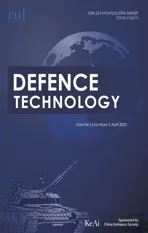Characteristics structure analysis on debris cloud in the hypervelocity impact of disk projectile on thin plate
2020-05-23ChunboZhngDeningDiXioweiChenKenWen
Chun-bo Zhng , De-ning Di , Xio-wei Chen ,c,*, Ken Wen
a State Key Laboratory of Explosion Science and Technology, Beijing Institute of Technology, Beijing,100081, China
b Institute of Systems Engineering, China Academy of Engineering Physics, Mianyang, Sichuan, 621999, China
c Advanced Research Institute of Multidisciplinary Science, Beijing Institute of Technology, Beijing,100081, China
Keywords:Hypervelocity impact Debris cloud SPH method Particle gauge points Motion characteristics
ABSTRACT In this paper, the gauge points setting is introduced in the SPH simulation to analyze the debris cloud structure generated by the hypervelocity impact of disk projectile on thin plate. Compared with the experiments, more detailed information of the debris cloud structure can be classified from the numerical simulation. However, due to the solitary dispersion and overlap display of the particles in the SPH simulation, accurate comparison between numerical and experimental results is difficult to be performed.To track the velocity and spatial distribution of the particles in the debris cloud induced from disk and plate,gauge points are locally set in the single-layer profile in the SPH model. By analyzing the gauge points’ spatial coordinate and velocity, the location and velocity of characteristic points in the debris cloud are determined. The boundary of debris cloud is achieved, as well as the fragments distribution outside the main structure of debris cloud.
1. Introduction
The experimental research,theoretical modeling and numerical simulation of hypervelocity impact are the technical basis of the design of protective structures. Generally, it is caused by the phenomenon of the debris cloud.Therefore,it is particularly important to study the structure and motion characteristics on debris cloud in the hypervelocity impact of projectile on thin plate.
In terms of experimental research, cylindrical projectiles have been extensively studied as representatives of non-spherical projectiles. Morrison [1] believes that under the same impact conditions, non-spherical projectiles have a greater destructive effect than equal-mass spherical projectiles, and are more likely to penetrate double-sheet structure. Piekutowski [2] studied the effect of the attack angle of a cylindrical projectile in the process of impacting a double-sheet structure. It is believed that the lowspeed fragments in the inner cone inside the debris cloud are the intrinsic cause of the different modes of damage to the rear wall.Schonberg [3] studied the ballistic limit of different projectile shapes by numerical simulation. They found that the shape of the projectile has a great influence on the penetrating ability of the double-sheet structure.The penetrating ability of the non-spherical projectiles are higher than that of the spherical projectiles.
Under the experimental conditions, it is difficult to obtain the fragments distribution of the debris cloud. The research on the damage degree of the double-sheet structure requires the fragments identification of the debris cloud. Numerical simulation research has become the choice of many researchers. Smoothed particle hydrodynamics(SPH)as a Lagrangian scheme of meshless particle method is widely used in hypervelocity impact[4].Due to the discontinuity of the discrete particles,it is difficult to obtain the characteristics and mass distribution of fragments or debris. Xu et al. [5] proposed a method of “neighbor’s neighbor” to identify fragments. Zhang [6] used the finite element reconstruction technique, i.e., FEM-SPH-FEM combined method, to obtain the characteristic parameters of the fragments with binary images, and used the connected region statistical algorithm to count the number of fragments. Liang et al. [7] obtained the fragments distribution in the debris cloud by SPH particle attribution algorithm and fragment boundary recognition algorithm. Although the above works obtained the particle fragment recognition,the method of recognizing fragments based on particle spacing is difficult to eliminate the influence of the non-neighboring solitary particle dispersion.However,considering the change in particle velocity can solve this problem.
In this paper, AUTODYN is used to simulate a disk projectile hyper-velocity impacting a thin plate with SPH method. In the simulation,gauge points are locally set on the single-layer profile of the model to track the velocity and spatial distribution of the disk and plate material. By post-processing the data information of the gauge points,the motion characteristics of the debris cloud and its local structure are analyzed.
2. Simulation scheme design
Hypervelocity impact is always accompanied by high temperature, high pressure, large deformation of materials, and even broken. The hypervelocity impact of a projectile consists of two stages:one is the debris cloud formation stage,and the other one is the debris cloud expansion stage.In the second stage,a bubble-like debris cloud is formed behind the thin plate [8]. Since the debris cloud expands at a relatively stable velocity in the space,and it has a relatively stable structure,the motion characteristics of the debris cloud can be analyzed in this stage,including the motion form and the characteristic velocity of the debris cloud.
By setting the particle gauge points in the disk and plate sections of the initial model, the velocity and spatial distribution of the particles can be obtained at any time during the spatial expansion process. The location of the gauge points includes in the head, tail and side edge of the disk and the front side of the plate. By analyzing the corresponding gauge points at these positions, the characteristic velocities in the debris can be determined,which can represent the motion characteristics of the debris cloud.
The analysis results include two parts:firstly,we will determine the location of the structural characteristic points of the debris cloud and the velocity in these positions,and then we analyze the distribution of the fragments and identify the visible boundary of the debris cloud by the axial velocity and radial velocity of the gauge points at the disk side edge. It can be used to improve the theoretical model of the debris cloud structure.
2.1. Simulation model
In this paper, the realization of the above method is demonstrated by taking a disk projectile hypervelocity impacting a thin plate as an example.In order to facilitate the comparison with the experiment, the working condition of the experiment in the literature[9]is directly adopted.In the simulation model,a copper disk projectile impacts an aluminum thin plate with an impact velocity of 6.39 km/s, in which the disk material is oxygen free high conductivity copper (OFHC) and the plate material is Al 6061-T6. The disk has a thickness of 2.36 mm and a diameter of 7.72 mm, while the plate has a thickness of 1 mm.The geometric model is shown in Fig.1.
The equation of state,the strength model,and the failure model of the material are especially accounted in the simulation, and the Mie-Grüneisen equation of state and the Steinberg-Guinan strength model [10] are employed. The specific parameters are shown in Table 1 and Table 2.
The Grady failure model [11,12] is used to define the failure stress of the material, i.e., the disk and/or plate material fails once the maximum principal stress exceeds the failure thresholdPs.However,the failure thresholdPsis not fixed and it is calculated by the following formula:
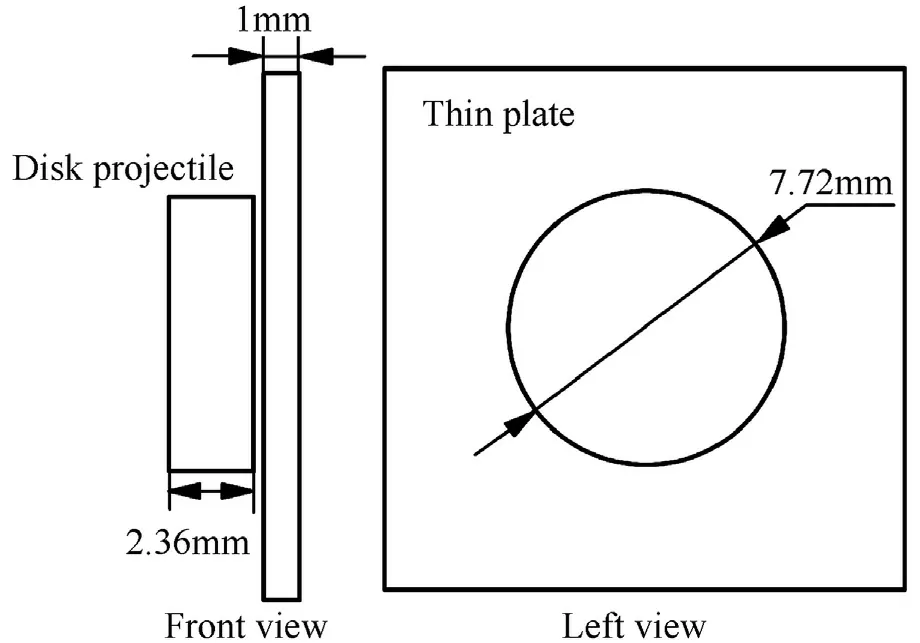
Fig.1. The geometric model.

Table 1 Parameters of Mie-Grüneisen equation of state for OFHC and Al 6061-T6.
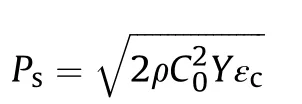
where ρ is the material density,C0is the material volumetric sound velocity;Yis the yield strength,which is updated according to the transient strain, strain rate and temperature of the material. This value varies greatly and has a serious influence on the calculated value ofPs. εcis the critical failure strain, which is set to 0.15 for OFHC material similar to Al 6061-T6 material [11].
Fig.2 is a three-dimensional simulation model.The SPH particle size of the material in the model is 0.05 mm.The disk and the plate have 47 layers and 20 layers of particles along the velocity z-direction, respectively. In order to reduce the amount of calculation and improve the calculation efficiency,a quarter model is adopted according to the model’s symmetry.
2.2. Gauge points set up and analysis
Based on the experimental results of disk projectiles impacting thin plates, Piekutowski [9] proposed a simple dynamic model for the formation of debris clouds in 1990, as shown in Fig. 3. The broken line describes the actual shape of the debris cloud and its internal structure, whilst the solid line is the shape of the debris cloud structure used in the model.The model is described with four axial velocities,i.e.,Vr,Vcu,VfandVi,whereVris the tail velocity of the disk,Vcuis the head velocity of the disk,Vfis the head velocity of the plate,Viis the axial velocity of the interface between the disk material and the plate material at the intersection of the external bubble.Vradis the radial expansion velocity of the interface point.
As shown in Fig.4,gauge points are set at a single-layer profile in theyozplane according to the position of the characteristic velocity of the debris cloud model in Fig. 3. The interface characteristic point of the debris cloud is originally located at the side edge of the disk.The particles are divided into ten layers at the side edge of the disk, and gauge points are layered in the y-direction with a lateral thickness of 0.5 mm. The outermost layer is the first layer,and total ten-layers of particles with 470 gauge points are sequentially set.
The analysis of the tail/head velocities of the disk and the headvelocity of the plate only need to focus on the particles close to the centroid axis. The tail characteristic point of the debris cloud is originally located in the center of the rear surface of the initial disk.In order to prevent the uncertain factors caused by particle dispersion and disturbance, four gauge points are set in the rear surface layer of the disk and numbered as No.471~No.474.

Table 2 Parameters of Steinberg-Guinan strength model for OFHC and Al 6061-T6.

Fig. 2. Three-dimensional simulation model.
During the hypervelocity impact,the particles at the front of the disk are dispersed seriously, as the head of the disk and plate interact intensively. It will be inaccurate if only one layer particles are set as gauge points in the head of the disk. Instead, we take three-layers of particles along the z-negative direction in the head of the disk and each layer takes three particles along the y-direction. A total of nine gauges are set, numbered No.475~No.483.
The way of setting the head gauge points of the thin plate is different from the gauge points of the tail disk,and it is necessary to take into account the influence of the tensile instability in the conventional SPH method [13]. When the shock wave reaches the free surface of the head of the plate, a separation layer of particle thickness is formed [14]. In order to analyze the influence, three gauge points are set along y-direction close to the centroid axis of the plate,i.e.,three gauge points are set along the inner layer of the axis, numbered No.484~No.489.
The second stage of numerical simulation is the expansion stage of the debris cloud, i.e., the debris cloud undergoes accelerated expansion to the isokinetic expansion process [15]. The motion of the SPH particles during the accelerated expansion process is uncertain, whilst the motion of the particles entering the constant velocity expansion is independent, when the particles maintain a constant linear motion,and the displacement is proportional to the time. In this stage, the stable characteristic velocities can be identified. Regarding the hypervelocity impact with thin plates, the debris cloud would reach a constant expansion in a very short time[16]. The numerical results show that the constant expansion is formed in 2.0 μs. In order to ensure the velocity and relative position of the gauge points reasonable to analyze the characteristic points and characteristic velocities of the debris cloud, the capture time should be after 2.0 μs.
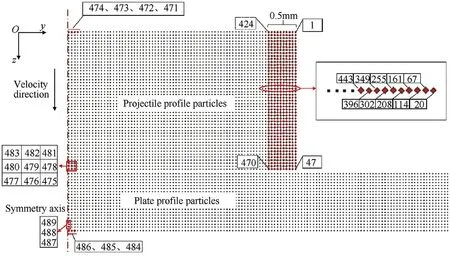
Fig. 4. Gauge points distribution in the yoz surface.
3. Simulation results and characteristic structure analysis of debris cloud
The simulation and experimental results at 5.1 μs of the disk projectile impacting the thin plate at a velocity of 6.39 km/s, are shown in Fig. 5, respectively. In the simulation results, blue and green particles represent OFHC and Al 6061-T6,respectively,and it clearly distinguishes the material distribution in the debris cloud.In the experimental results, the spatial distribution of different materials can be seen because the different transparency of the disk and the plate material under X-ray results in different grayscale.Both Fig. 5(a) and (b) are overlapping images shown in one direction,which may cause a little visual error from the simulation and the experimental results. In terms of the overall contour, the simulation results are well consistent with the experimental results.
Numerical simulation has much more data to analyze, which can supplement the deficiencies of the experimental analysis, and thus improve the model developed from the experimental results.Basically, the X-ray image can only show the outline of the debris cloud in Fig. 5 (b). In order to get a more realistic structure of the debris cloud, Fig. 6 shows the simulation results of single-layer profile particle distribution which corresponding to theyozplane atx=0, 2, 4, 8 mm, respectively.
In Fig.6,it can be seen that there is an overlap between the head of the disk material and the tail of the plate material.The existence of these particles directly affects the identification of the head boundary of the disk material.At the same time,there is a slender and continuous particle bridge connecting the disk material and the external bubble. This part of the structure is defined as“crosswing”. This structure affects the identification of the disk material and the analysis of the interface characteristic velocity of the debris cloud at this location.
In order to obtain the characteristics of the overall structure of the debris cloud, the following analysis will take the particles distribution of the single-layer profile of the debris cloud atx=0 in Fig. 6 as the largest view under experimental conditions.
4. Characteristic analysis of the debris cloud
4.1. Analysis of the characteristic points
In order to define the position of the characteristic points of the debris cloud,the gauge points in the single-layer profile of theyozplane are analyzed at the moment of 5.1 μs,as shown in Fig.7(a).In the figure, the ten-layer particle gauge points from the outer edge to the inner side of the disk,and Nos.471-486 particle gauge points are highlighted in different positions with different colors and signals.Obviously,the ten-layer particle gauge points on the lateral side of the disk cover the external bubble, the “cross-wing” and some the outer boundary of the disk material debris.
The latter analysis will show that the “cross-wing” is mainly composed of the outer particles in the middle and rear of the disk,which is distributed along they-direction. The external bubble is mainly composed of the outer particles in the front half of the disk.These external bubble particles have a smaller z-direction velocity value, and thus distribute inversely in the impact direction in Fig. 7(a). The outer boundary of the debris cloud is mainly composed of the outer particles in the back of the disk, which is opposite to the external bubble distribution. The boundary particles, which initial position is backward, have smaller z-direction velocity value,and thus are distributed along the impact direction.
Furthermore, as shown in Fig. 7(a), “a” stands for the disk tail,“b” is the disk head, “c” is the plate head, and “d” represents the interface partial region of the debris cloud. Fig. 7(b) shows the zoom of the “d” region. The three regions of “a”, “b”, and “c”correspond to three characteristic velocities,i.e.,Vr(the tail velocity of the disk projectile),Vcu(the head velocity of the disk projectile),Vf(the head velocity of the plate),and the region of“d”corresponds to the two characteristic velocities ofViandVrad(interface axial velocity and radial expansion velocity).
When talking about the characteristic velocity at the three positions of the disk tail“a”,the disk head “b”and the plate head “c”,the average value of the z-direction velocity of the corresponding position gauge points can be roughly taken as the characteristic velocity. It is worth noting that when analyzing the characteristic velocity of the position of the disk head, the gauge points (gauges Nos.475, 476, 477) are separated from the main body of the disk material,and thus they are not accounted for. Instead, the average velocity of the particle gauge points of the second layer is taken as the characteristic velocity of the disk head. Detailed analysis is given in Section 4.2.
When analyzing the velocity of the plate head,the influence of the first separation layer of SPH particles on the velocity should also be considered [14]. During the isokinetic expansion process of the debris cloud, comparing the z-direction velocity of the particle gauge points No.484~No.489, the velocity of the first layer of particle gauge points No.484,No.485,No.486 is higher than the gauge points No.487, No.488, No.489 by about 17 m/s. It can be inferred that the separation layer is present in the traditional SPH method.However, in the analysis of the velocity of gauge points, it can be seen that the defect of the SPH method itself does not have much influence on the velocity of particles,and this possible error can be neglected at such high velocity impacts.
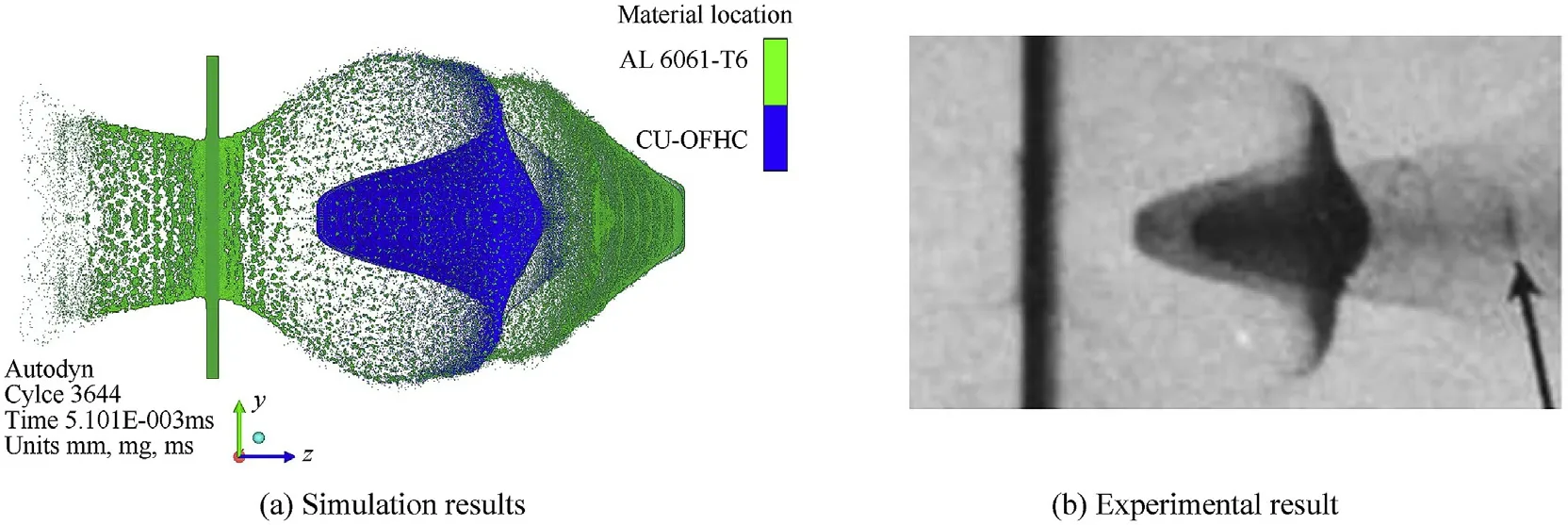
Fig. 5. Comparison of numerical simulation and experimental result.
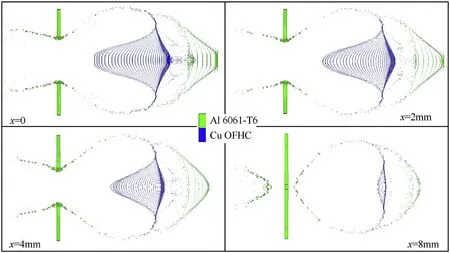
Fig. 6. Particle distribution of debris cloud regarding yoz plane at x=0, 2, 4, 8 mm.
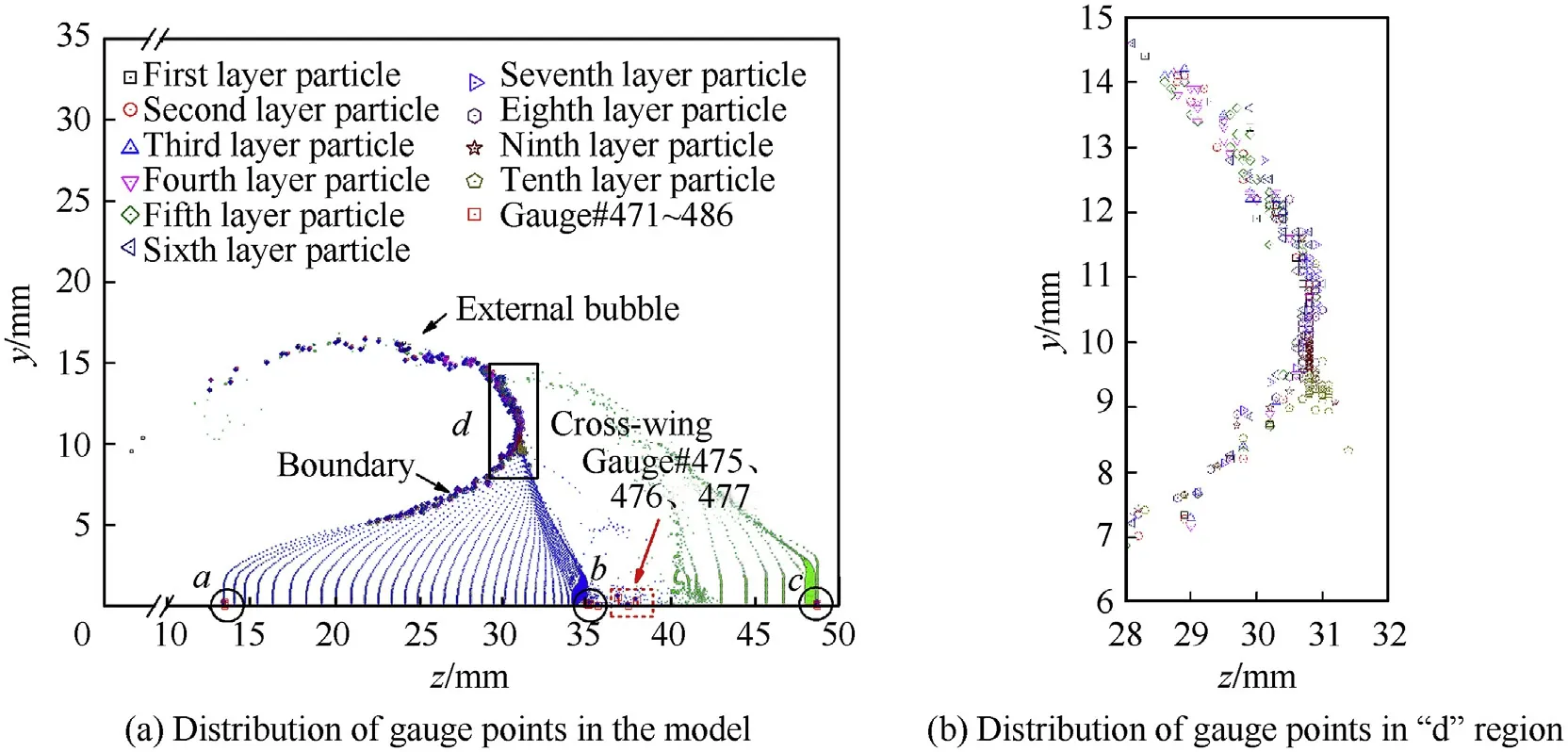
Fig. 7. The distribution of gauge points.
During the disk projectile impacts on the thin plate, the side edge of the disk is affected by the strong lateral rarefaction,and the particles are dispersed distinctly. A part of the disperse particles forms the external bubble,and the other part of the particles form the “cross-wing”. The “cross-wing” and the major debris cloud structure are separated from the external bubble. Due to the overlap display of particles and the influence of solitary particle dispersion, the interface position is not easy to observe, and it is necessary to analyze the arrangement state of the particles.In order to obtain the particle fragment distribution of the interface, in Section 4.3, the velocity of the particles in the local region of the interface is analyzed in thex,yandzdirections, respectively.
There are three specific forms of spatial distribution of particles,namely solitary dispersing particles, particle clusters, and particle fragments.The spatial distribution of these three kinds of particles can be determined by the spatial position coordinates and velocity distribution of the gauge points. In the initial model, the particle gauge points of the lateral side of the disk are set in the same space along thez-direction,and the distance between the adjacent layers of particles is 0.1 mm. Comparing the initial model with the distribution of particle gauge points at 5.1 μs in Fig.7(b),the following inferences are made:
(1) If the direction and value of the velocity of the adjacent particles in the initial space keep the same during the impact process, these adjacent particles form a fragment;
(2) If non-adjacent particles have the same direction and value of particle velocity and they arrange tightly in space during the spatial expansion,a stable particle cluster will be formed.
In order to restore the real debris cloud structure,it is necessary to strip the single disperse particles and retain the two observable structures of the particle fragment and the particle cluster for analysis. The detailed analysis is in Section 4.4.
4.2. Analysis of disk head/tail velocities and plate head velocity
In the single-layer profile of debris cloud, the characteristic velocity can be derived from the particle gauge points at the corresponding characteristic position. According to the analysis in Section 4.1, the velocities of the disk head and tail and the plate head velocity are shown in Table 3, respectively. Comparing with the experimental results, the error of the disk tail/head velocities and the plate head velocity is 0.39%,0.18%,and 1.78%,respectively,in the numerical simulation.Therefore,the gauge points setting of a specific position or region can obtain the motion characteristics of the debris cloud.It should be pointed out that the dispersed state of the disk head can be identified clearly through the particle gauge points of the head, and then the boundary of the debris cloud is defined with a small error compared with the experimental result.
4.3. Analysis of disk region particles space velocity distribution
The velocity of the particle gauge points in thex,y, andzdirections of the outer edge of the disk is analyzed, and the arrangement state of the particles can be obtained by the velocity distribution between adjacent particles.In the particle gauge points at the outer edge of the disk, if the velocity of the initial adjacent particles in three directions is equal, the particles will form fragments.The velocity components of the particle gauge points in the three directions are analyzed separately as below.
Firstly,it is necessary to analyze the stability of the motion state ofyozplane single-layer particle gauge points in thex-direction.Fig.8 shows the velocity component distribution in thex-direction of the ten-layers gauge points on the outer edge of the disk.Obviously,the velocity distribution of the particles in the front half of the disk oscillates seriously in thex-direction. It indicates the particles are dispersed due to impact and it is not easy to form fragments. However, for the outer particles in the back half of the disk, the oscillation of thex-direction velocity component is relatively small. Especially regarding the first, second and third layer particles in the dashed square in Fig. 8, thex-direction velocity changes within ±5 m/s. It is a greater possibility that there exist fragments in this part of the particles. In contrast, the corresponding fourth to tenth layer particles have a severe oscillation in thex-direction velocity distribution, and the velocity variation between adjacent particles is large,indicating that the interparticle fractures.
The radial velocity of the particles determines the extent of the debris cloud’s expansion in space.Therefore,the radial distribution of the debris cloud particles can be obtained by analyzing theydirection velocity of the ten-layers gauge points on the outer edge of the disk. Fig. 9(a) shows the y-direction velocity distribution of the ten-layers particle gauge points on the outer edge of the disk.Obviously, the front half of the outer particles of the disk has a larger radial velocity than the back half. It can be considered that the outer particles of the front half of the disk form more external bubble particles,while the outer particles of the back half are more likely to form the outer boundary of the debris cloud and “crosswing”. From the outside to the inside of the particle gauge points,the radial velocity decreases in turn, indicating that the outer particles of the disk are more likely to form external bubble.
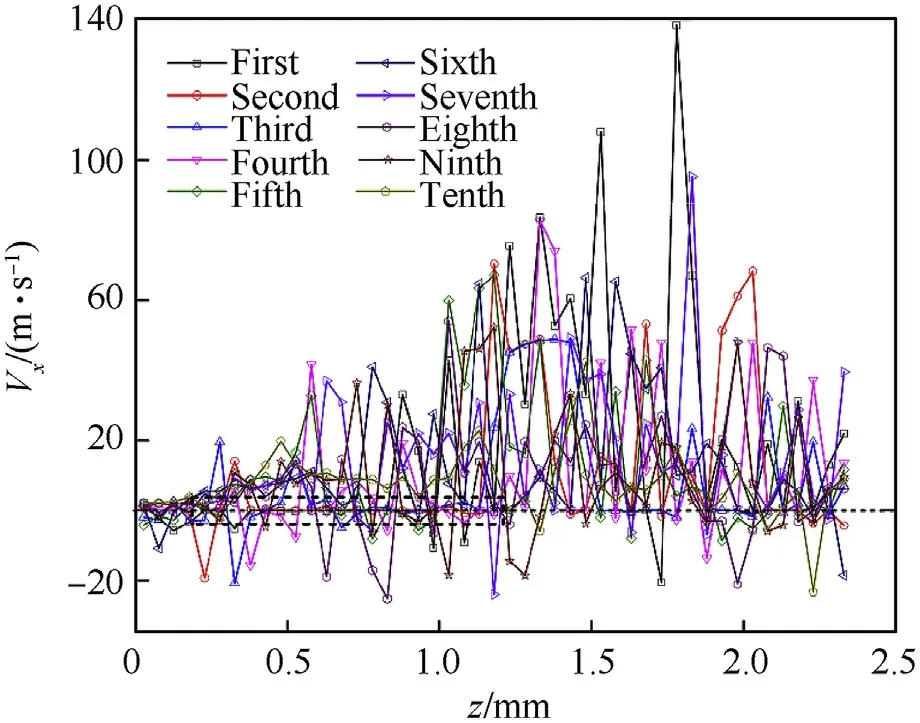
Fig. 8. The velocity distribution of particle gauge points in the x-direction.
Fig. 9(b) shows a local zoom of the frame region in Fig. 9(a),which references to the outer gauge points of the back half of the disk.It can be seen that the first,second and third layers of particles form four velocity platforms,from left to right numbered ➀➁➂➃,in which the particles are consistent in they-direction velocity,respectively, and the initial position of the platform particles is concentrated in the range of 0.276-0.879 mm on the outer side of the disk. Consistent with the previous analysis of the particle velocity in the x-direction, the corresponding adjacent particles are easy to form fragments.
Fig.10(a)shows thez-direction velocity distribution of the tenlayers particle gauge points on the lateral edge of the disk.There is a maximum velocity platform (Vz=5863.30 m/s). The axial velocity of the particle gauge points in the range of 0.577-0.879 mm in the middle and back of the disk is close to the maximum speed,and the velocity change is small. Differently, the axial velocity of the particles in other ranges is significantly lower than it,i.e.,in the range of 0.879-2.360 mm on the outer side of the front half of the disk and in the range of 0-0.577 mm on the outer side of the back of the disk.Obviously,the axial velocity of the outer particles in the front half of the disk decreases more rapidly than that in the back half of the disk.It is shown that the lateral particles in the front half of the disk form the external bubble after the disk projectile impact the thin plate.The axial velocity of the outer particles in the back half of the disk gradually decreases from the inside to the outside in theinitialzposition,and these particles form the outer boundary of the disk material of the debris cloud.Comparatively,the particles in the middle and back of the disk form a “cross-wing”, which have the maximum velocity. Due to the existence of multilayer particles having the maximum velocity,how to determine the distribution of these particles is very important to understand the structure of the debris cloud.
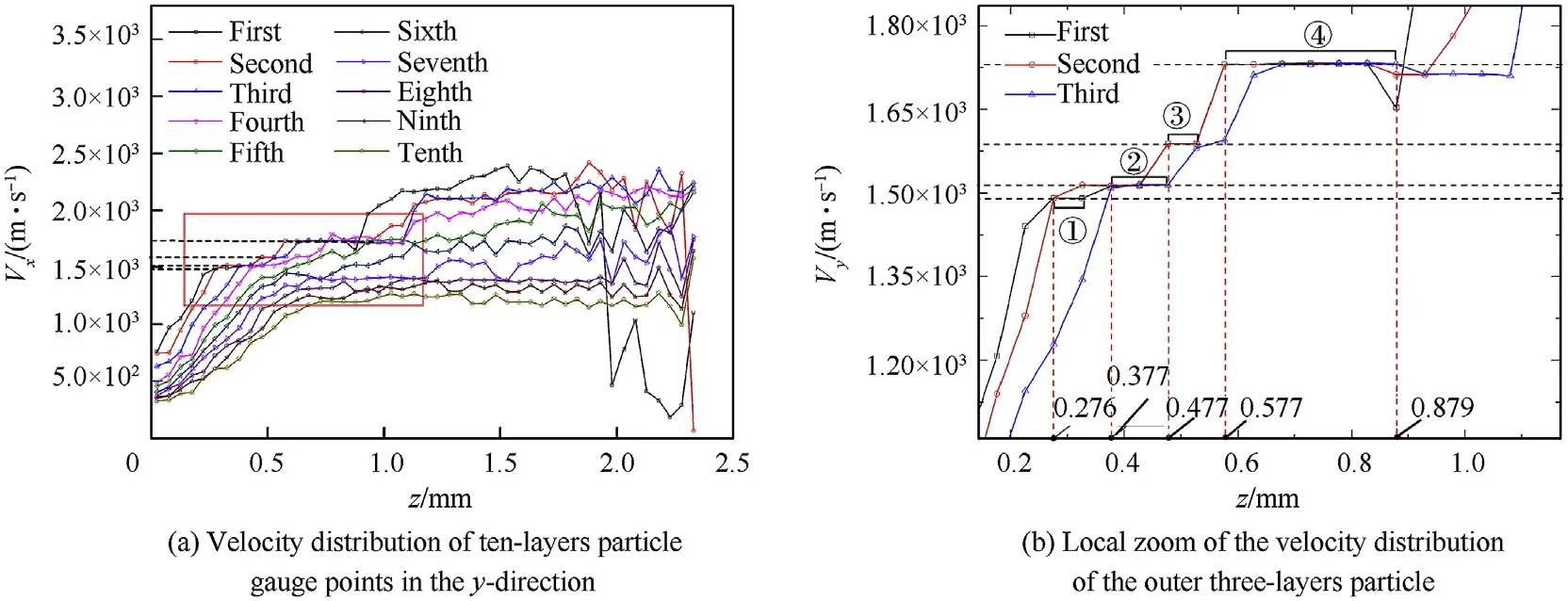
Fig. 9. The velocity distribution of particle gauge points in the y-direction.
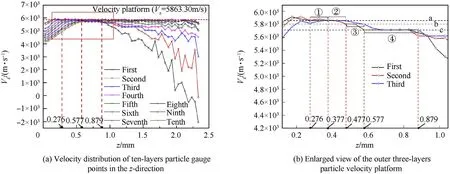
Fig.10. The velocity distribution of particle gauge points in the z-direction.
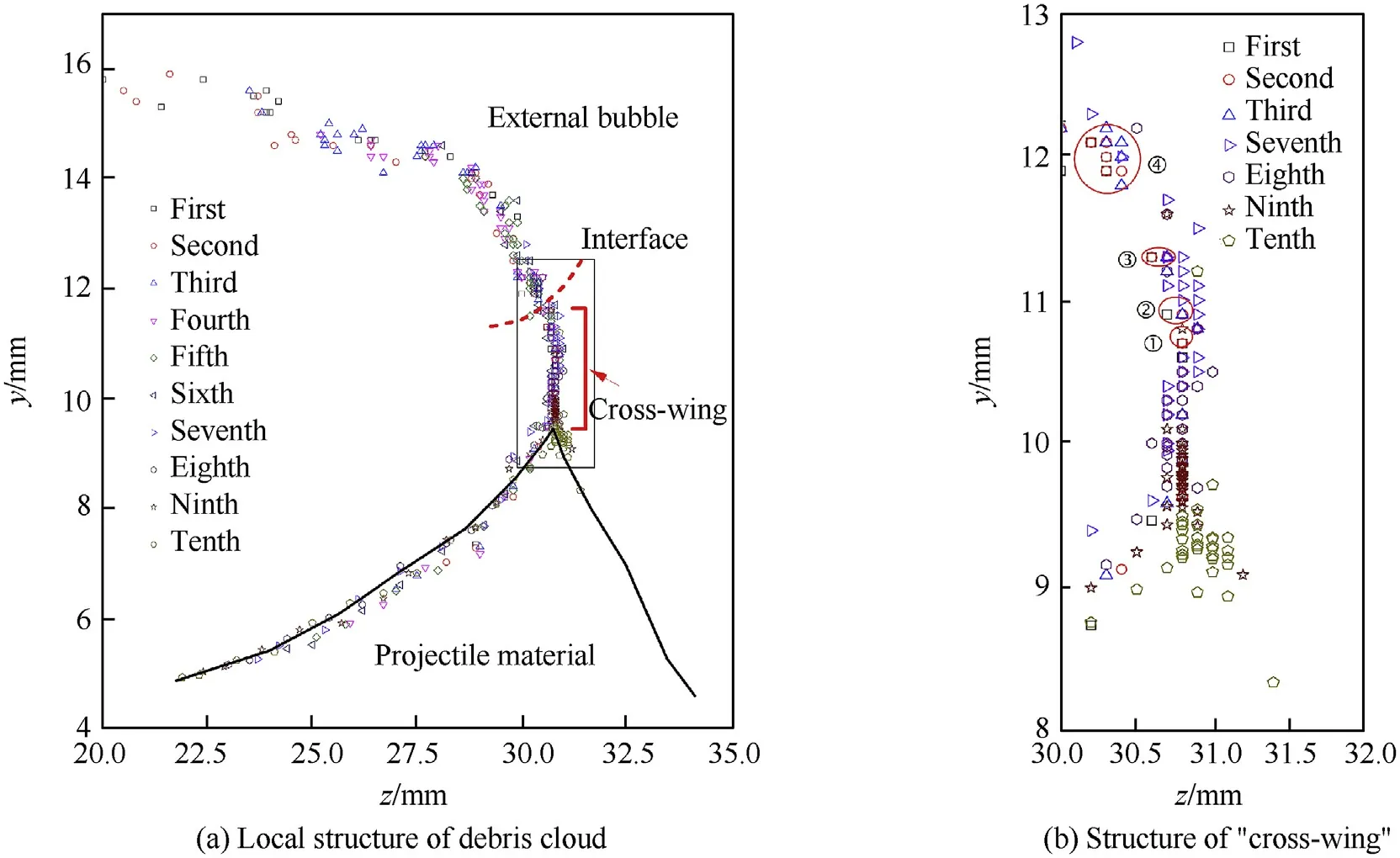
Fig.11. The analysis of interface point.

Table 4 The velocity of the particle gauge points at fragment ➂
After the disk projectile impacts the thin plate,the axial velocity of the first to sixth layers in the range of 0.879-2.360 mm in the front outer side of the disk changes greatly. It indicates that the particle dispersing in this range is serious,and the particle velocity at the front of the disk is lower than that at the back of the same layer,which corresponds to the reverse distribution of the particles in the external bubble of the debris cloud. This shows that the smaller the axial velocity of the particles,the more the particles lag in the spatial distribution.The axial velocity of the seventh to tenth layer particles in this range does not change much,and this part of the particles form a “cross-wing”.The axial velocity of the particles in the range of 0.276-0.879 mm in the middle of the disk does not change much, and this part of the particles also forms a “crosswing".
Remarkably, regarding the particles from the inside to the outside in the range of 0.276-0.577 mm, their velocities gradually approach the maximum velocity, whilst the axial velocity of each layer in the range of 0.577-0.879 mm is almost equal.Therefore,it possibly exists the fragment particles in the range of 0.577-0.879 mm.
According to the above analysis of the particle velocity in the x and y directions,the outer three-layers of particles are more likely to form fragments. Fig.10 (b) gives the local enlarged view of the axial velocity distribution of the first, second and third layer of particles in Fig. 10 (a), and there are three distinct velocity platforms “a”, “b”, and “c”. In Fig. 10(b), the axial velocity platform➀➁➂➃is distributed in the range of 0.276-0.879 mm on the outer side of the disk, and the velocity distribution is consistent with compared to the corresponding platform particles in Fig. 9(b).
Regarding the platform particles ➀➁➂➃, the velocity components in x, y, and z directions are same respectively, and thus we conclude that the four platform particles form four fragments in the space respectively. The more the platform particles, the larger fragment mass. As the above inference, the largest fragment mass should be in the range of 0.577-0.879 mm.
4.4. Analysis of the characteristic point and velocity at the interface
The interface is to distinguish the overall structure of the major debris cloud structure from the external bubble, and the “crosswing” and the disk material compose the overall structure of the major debris cloud. In general, the interface locates between the“cross-wing”and the external bubble,and the detailed structure of the “cross-wing” needs to be discussed.
Fig. 11 (a) is a partial debris cloud structure consisting of tenlayers of particle gauge points. According to the above velocity platform analysis,the “cross-wing”mainly consists of the particles of first,second and third layer in the range of 0.276-0.577 mm,and the seventh to tenth layer particles in the range of 0.577-2.360 mm. In contrast, the fourth, fifth and sixth layer particles have no obvious boundary. These particles are dispersed in the “cross-wing” and the external bubble. During the SPH simulation, the solitary dispersing particles, particle clusters and particle fragments will cause blurring of the boundary of the debris cloud in the simulation results.Moreover,comparing the simulation results and the experiment results, it is difficult to observe the solitary dispersing particles in the periphery of the debris cloud under the experimental conditions,and also hard to compare the true contour boundary of the debris cloud. In order to obtain the finer “crosswing” structure in Fig. 11(a), the serious disperse particles are removed,and only the first to third layer particles and the seventh to tenth layer particles are retained here, as shown in Fig.11(b). It can be seen that the“cross-wing”is closely connected with the disk material, and the two-part structures constitute the overall structure of the major debris cloud.
The particles in the platform ➂are located at the top of the“cross-wing”, which can be used to determine the characteristic velocity of the debris cloud. Table 4 shows the radial and axial velocity of the particle gauge points in the platform, and the average velocity of these particles can be obtained as the axial velocity,Vi=5805.18 m/s,Vi/V0=0.908(V0=6.39 km/s). The error is 0.17% compared with the experimental results. The radial expansion velocityVrad=1588.04 m/s,Vrad/V0=0.249, and the error is 3.55% compared with the experimental results, as shown in Table 5.
Although the particle gauge points are set by single-layer profile particles,it is impossible to obtain the total number of the particles contained in the particle fragments in three-dimensional space.But,this method has a great advantage in the spatial identification of debris cloud and the velocity analysis.Firstly,only a little particle gauge points are needed but it may easily identify the fragments.Secondly,the real boundary of the “cross-wing”of the debris cloud is given,and the position of the interface point is determined,and the result with less error is obtained.
5. Conclusion
The comparison between the numerical simulation and the experimental result in this paper verifies the reliability of setting gauge points in the particles of the disk projectile and thin plate.At the same time, through the discussion of the spatial position, velocity direction and velocity value of the particle gauge points,the three arrangement states of the particles in the debris cloud are analyzed. They are solitary dispersing particles, particle clusters and particle fragments. The definition of the three particle aggregation states is used in the identification of particle fragments,and the results are consistent with the experiment. Comparativeanalysis of the radial and axial velocity is intuitive to identify the arrangement state of the adjacent particles.Finally,the distribution of fragments in the “cross-wing” of the debris cloud is obtained.This method is quite beneficial to the identification of the debris cloud boundary.

Table 5 The interface velocity.
Acknowledgment
The work is supported by the Natural Science Foundations of China (11872118,11627901).
杂志排行
Defence Technology的其它文章
- A comparison of the ballistic behaviour of conventionally sintered and additively manufactured alumina
- Effect of operating temperature on aged single lap bonded joints
- Investigation on energy output structure of explosives near-ground explosion
- A fast-running method for blast load prediction shielding by a protective barrier
- Coating processes towards selective laser sintering of energetic material composites
- Dynamic modeling and parameter identification of a gun saddle ring
